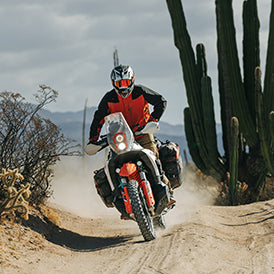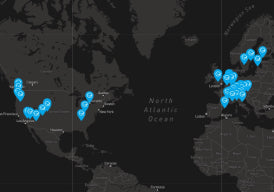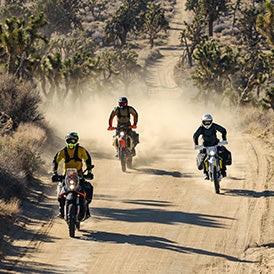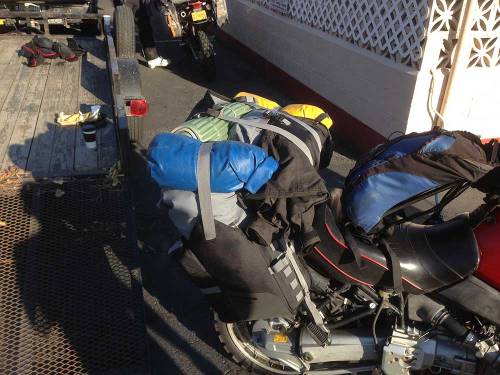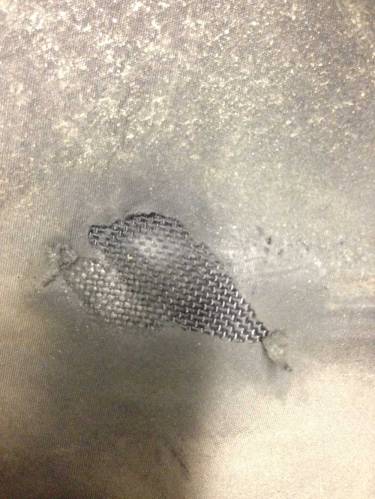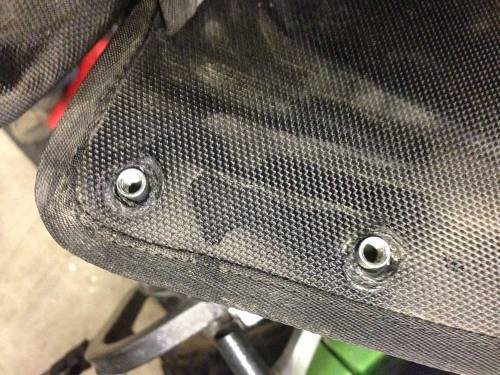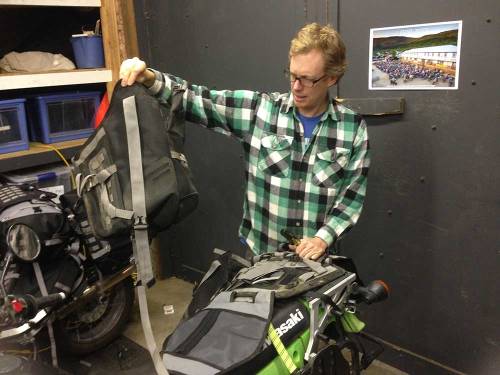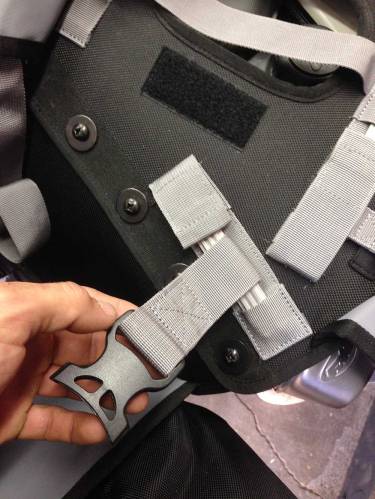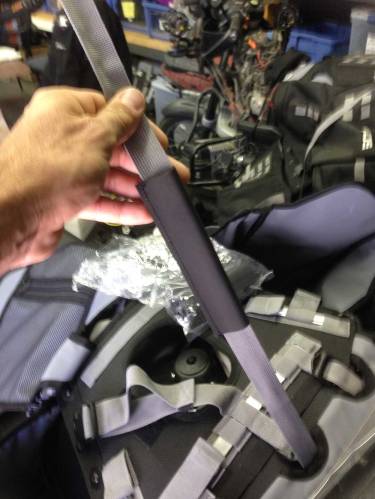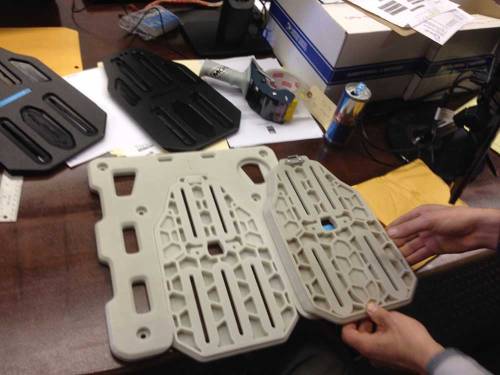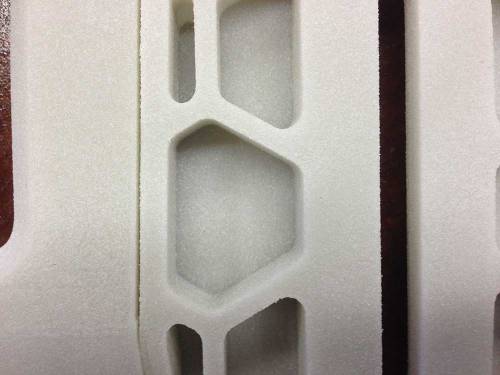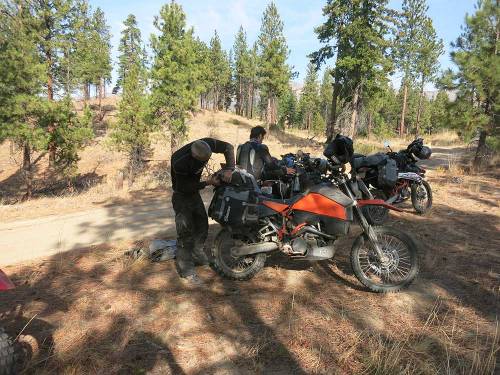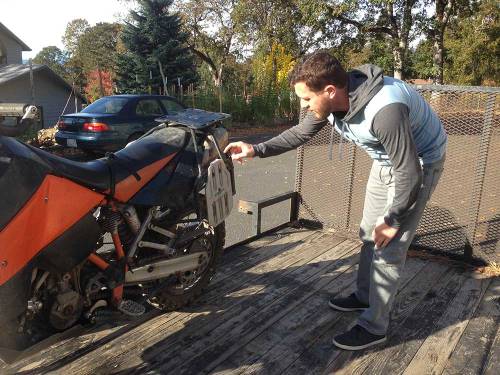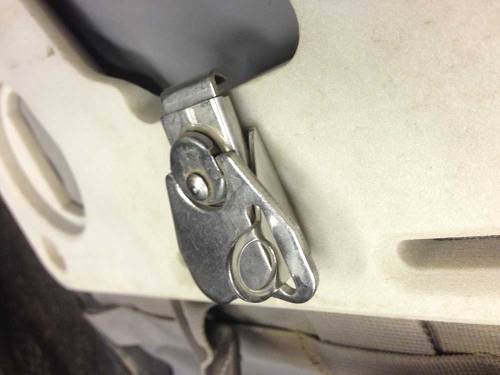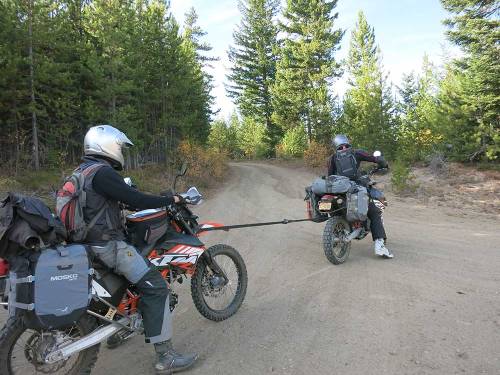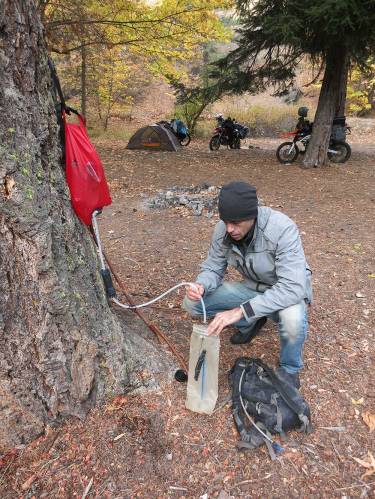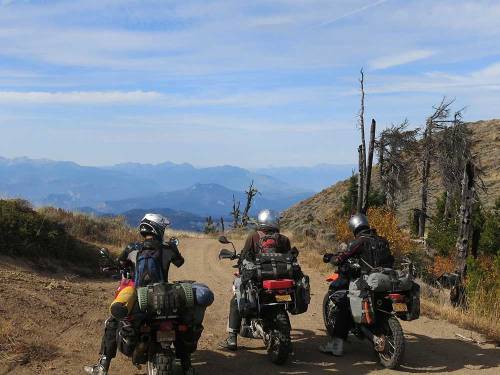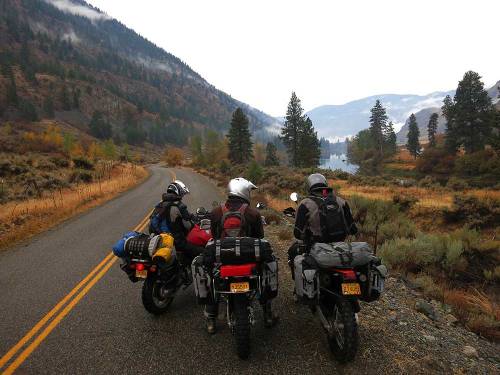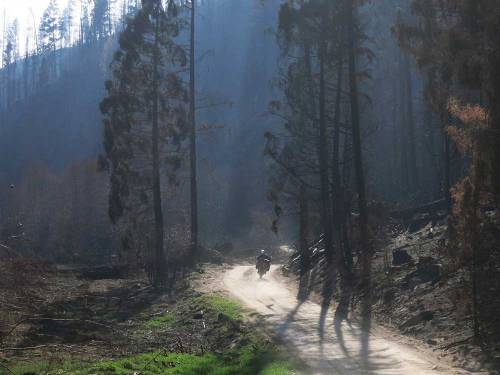Your Cart is Empty
Luggage
Apparel
events
The Mosko Blog
Gear Testing on the WABDR
March 30, 2022
Gear Testing on the WABDR
October 22, 2015
Just got back from a trip on the far northern section of the Washington Backcountry Discovery Route. We’ve been wanting to ride this for several years and kept getting shut down by fires, snow, and/or various other obstacles. Finally made it. Also we had some specific gear testing objectives for the trip: specifically a) testing the new Reckless 80 prototype and b) testing the 3D printed versions of wedge mount redesign.
Reckless 80 Redesign
My buddy Scott packed the most recent R80 prototype on his R1100gs. He’s a perfect tester because a) he has older camping gear that takes up a ton of space, b) he isn’t shy about overloading the bags/bike and c) he can really ride. Even knowing that though, I still hesitated when I saw the bike fully loaded. This might be the most overloaded R80 I’ve ever seen. Perfect formula for testing though.
I followed him through several bumpy sections to see if there was any slop in the bags. The load barely moved at all.
Tent pole holder used for a knife, that’s a new one.
After the trip, back in the shop, Andrew and I examined the R80 in detail looking for wear spots or issues. We didn’t use loctite on the screws connecting the legs to the main body, and sure enough 2-3 of them were starting to work loose. We’d planned to use loctite we just forgot, this shouldn’t be an issue in production.
Found some wear on one side of the R80 where it’d been rubbing against the bike. The outer fabric is hypalon, and the texture you see through those abrasion spots is the inner fabric of the hypalon, not the ballistic nylon underneath it, so it was still a long ways from wearing through the bag. We’re thinking next year we’ll recommend that riders check the bags after the first trip, and if they find any ‘hotspots’ like this, maybe use a spray adhesive to add a sacrificial layer between the bag and bike. Hypalon and 1680D ballistic are two of the most abrasion resistant fabrics out there, but at some point no fabric will hold up if it’s vibrating and moving against a hard surface under heavy load. The hotspot locations are going to be different on every bike.
We also backed out the screws and looked to see if there was any elongation or deformation in the holes we’d melted. Answer: no. Even with a few of the screws partially backed out and the bag majorly overloaded, the holes were fine. The melting process creates a hard external wall on the hole that provides a lot of integrity.
How cool it is to be able to disconnect the leg in like 30 seconds?
A few other things on the new R80
- No sewn-on buckles, no sewn-on straps. Everything is removable, replaceable, and field serviceable. All the straps/buckles are connected like this:
- Elastic strap keepers for the excess tails
- Dromedary nozzle opening on rear pockets
- Hypalon sleeves for high abrasion points on connection straps.
- And of course, the fuel opening for the 690, which didn’t get used on this trip because it wasn’t mounted on a 690.
3D Printed Wedge Mount
We now have two generations of 3D-printed wedge mounts, the latest of which will be the basis for our injection molds. Lee mounted both generations on my 950 for this trip. The newer version (left) has 3 slots at the bottom to accommodate different types of racks.
Also in the newer version, we rounded out the corners and added a very slight ‘angle’ to the inside of the honeycomb so the production parts can release more easily from the molds.
The 3D printed version uses the same material we’ll use in production (glass filled nylon), but the strength is less because it was printed not molded. The finish on the printed version is also very rough, so they don’t slide on/off as smoothly, plus the final molded version will be black not white. Although the white is kind of growing on me.
The mounts got a good workout. Plenty of high speed bumpy riding. I put the bike down on both sides, although only slow speed tip-overs not high velocity crashes. Like for example, I fell asleep on the bike on the side stand at a stop sign (what can I say, it happens haha) and toppled over. They’ll get some better crash testing down the road I’m sure, but after riding with them fully-loaded for 5 days, I’m not overly concerned about strength. They feel totally bomber.
Back at the shop Lee and I went through the mounts in detail looking for any wear or cracking. Everything checked out fine.
The new locking latches worked great too. Just like the current latch, but they can take a padlock, or you can run a cable lock through there as well.
Cinch Straps
Andrew and I have been working on some new cinch straps. Everyone has their favorite strap, of course, and we have our own strong opinions too. For me personally I don’t like elastic or plastic buckles for offroad riding, so for years I’ve been using these old-school DaKine windsurf/surfboard straps. These also double as a tow strap in a pinch.
On this trip my buddy Dave’s 690 broke down on the WABDR and we towed him out. It was only about 15 miles of dirt, but in very hilly terrain, so it took 3+ hours. We used my DaKine connection straps and I put the Backcountry 30L duffle on my back. The quick release cam buckle in the middle of the strap really came in handy because it’s a lot faster/safer to coast downhill than to tow, so we were connecting/disconnecting at the bottom/top of every hill.

For our cinch straps, they’ll connect to the rack with little loops, and the cam buckle side will have a ladderlock so it’s adjustable based on the size of the duffle.

Small Drybag

Big drybag

The ‘tail’ section is just a piece of webbing 5′ long with a strap keeper for the excess length. If you don’t care about using them as a tow strap you can trim/melt to whatever length you want.
The two ‘tail’ sides can be connected for a 10′ tow rope. We’re thinking of including a carabiner to for the quick release function.
Prototypes are underway. Hope to have something testable in the next few weeks.
Observations
A few other gear observations from the trip. I rigged the large MOLLE bag – designed for triple-strip MOLLE – on the side of a Backcountry 25 pannier – which only has double-strip MOLLE – because I wanted to store my water there. A lot of customers have been doing this already even though we say it doesn’t fit on the website. In reality, it looks a little clunky but it works.
I’m still really digging the reduced water-weight/space from using a water filter (running with 2L less water saves 4.5 lbs), plus never having to worry about running out of water. In the NW mountains there’s water everywhere so there’s no point in carrying more than 4-5L at a time.
Rob’s been connecting his mini CRKT hatchet on the back of his Scout 25s. There’s a zip tie in there somewhere, just to make sure it doesn’t bounce out. I don’t carry a hatchet but I gotta admit: that thing comes in handy a lot. Seems like a natural storage spot. Zip tie highly recommended.
Trip Report
Another awesome fall moto trip. Great crew, and we really enjoyed finally riding this section of the WABDR that none of us had ever visited. Lots of burn damage from the big fires this summer.


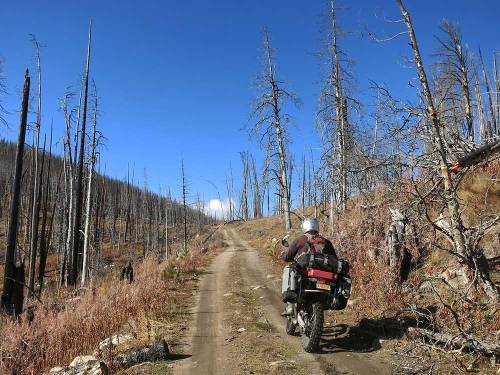
Big thanks to the folks at Wenatchee Powersports for getting Dave’s 690 fixed and back on the road first thing the next morning so he could rejoin us. Every time I’ve stopped at this dealership on a trip – which is many times over the years – everyone has been so incredibly friendly and helpful. THANK YOU!!
Leave a comment
Comments will be approved before showing up.
Warranty and Crash Replacement
We never cut corners during development or manufacturing, so we stand behind our products. If one fails due to a problem with materials or workmanship, we’ll make it right.
Your are successfully subscribed for email notifications.
Notify me when available
We will send you a notification as soon as this product is available again.
Your email is required
We don't share your email with anybody
x

